Art Market
What Sold at Art Basel in Miami Beach
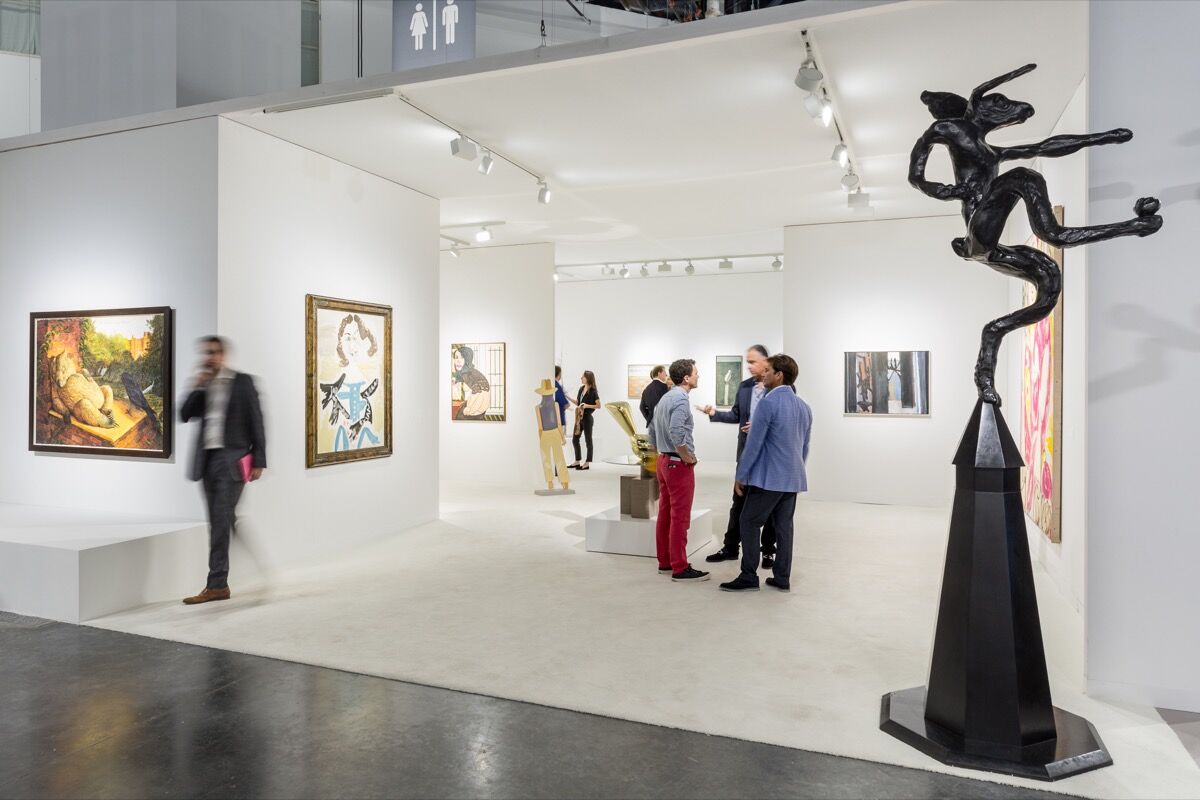
Installation view of Paul Kasmin’s booth at Art Basel in Miami Beach, 2017. Photo by Alain Almiñana for Artsy.
Will 2017 simply be known as the year of the $450 million Leonardo da Vinci or is a real art market rally underway? Signs pointed towards the latter at this year’s edition of Art Basel in Miami Beach, which closes on Sunday evening after a five-day run and offered some $3.5 billion in art for sale.
Despite gallery closures and continued challenges for mid-sized dealers, 2017 will likely see an improvement in the art market’s size over 2016. According to UBS chief investment officer Mike Ryan, “an obvious appetite for art right now, especially in the ultra high net worth space,” has combined with a near-unprecedented eight-year expansion in global equity markets (currently the third-longest in history), providing the liquidity to feed that appetite.
Whispers among dealers and collectors that a downturn in the market is on the horizon were prevalent at Art Basel in Miami Beach and analysts at Bank of America have predicted a correction in equity markets will take place in mid-2018. However, Ryan said he doesn’t expect the backdrop fueling the art market’s rebound to change in the near-term, and projects the current expansion will continue not just through 2018 but well into 2019.
“As long as the economy is doing well and corporate earnings are growing at a healthy rate, which I think they will, that’s going to generate the kind of income that’s going to be important to supporting the art market,” he said.
“Bull markets do not die of old age; they die of cause,” Ryan said, citing data from the San Francisco branch of the Federal Reserve that shows the likelihood of recession does not to rise significantly as periods of expansion grow older.
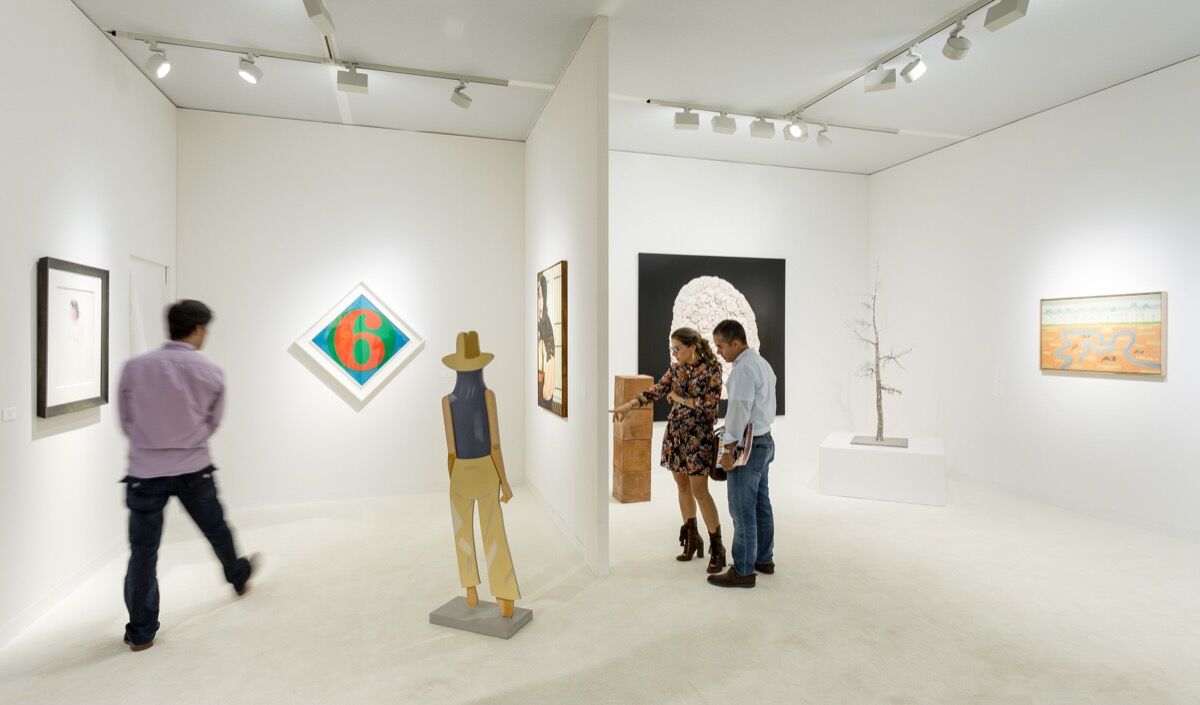
Installation view of Paul Kasmin’s booth at Art Basel in Miami Beach, 2017. Photo by Alain Almiñana for Artsy.
What could trigger a downturn? Miscalculations in monetary policy in the United States and Europe, political uncertainty, and geopolitical conflict, among other things, said Ryan, bringing the expansion to a halt and dragging the art market back down with it. But the Swiss bank believes these risks are relatively minimal at the moment, despite heated rhetoric between international leaders.
The macro drivers still need to pass through an individual’s psychological filter in order to lead to art buying. According to new research released by UBS on Thursday, 71% and 54% of collectors cite personal enjoyment and passion, respectively, as the key drivers of their buying, while 40% view art with an investment lens. Nonetheless, “some days you feel more flush than other days,” said Chicago collector Irving Stenn Jr., and on those “more flush” days, you tend to buy more (and more expensive) art. This year, seven-figure sales were significantly more prevalent than last.
Among others, Paul Kasmin Gallery sold Lee Krasner’s Sun Woman 1(1957), featured in her 1984 MoMA retrospective, for which it was asking $7 million. Mnuchin Gallery notched an early sale of Mark Bradford’s Fly in the Buttermilk (2002) for $3 million. Lévy Gorvy placed Ellsworth Kelly’s Sumac (1959), which had been in the same collection since 1989 and was included in the artist’s 1996 Guggenheim retrospective, for between $4 million and $5 million. Michael Werner sold Sigmar Polke’s Transparent #8(1988) for $1.5 million; Eva Presenhuber sold Ugo Rondinone’s hunger moon (2013) for $1.2 million; and Mazzoleni sold Alberto Burri’s Bianco Plastica B 1 (1967) for $1.5 million.
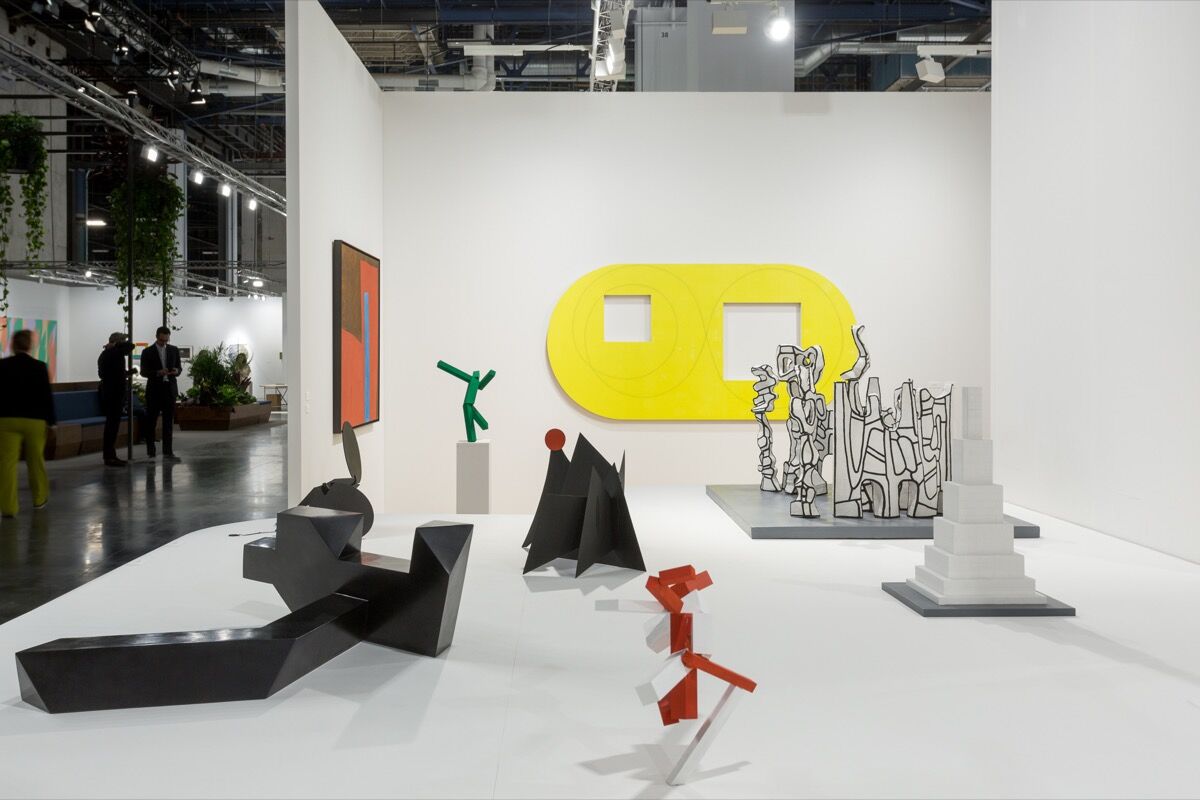
Installation view of Pace Gallery’s booth at Art Basel in Miami Beach, 2017. Photo by Alain Almiñana for Artsy.
Pace also had a strong performance in this range, with Yoshitomo Nara’s Young Mother (2012) selling for $2.9 million and Pace Prints selling all 100 editions of KAWS’s set of nine silkscreens, THE NEWS (2017), for $45,000 each or $4.5 million in total. Additionally, a Willem de Kooning oil on paper work (Untitled, c. 1967) sold for $450,000, Michal Rovner’s video Urgency (2017) sold for $140,000, an untitled Joel Shapiro bronze went for $350,000, and a Wang Guangle canvas (170326, 2017) went for $325,000. Pace Gallery president Marc Glimcher attributed the brisk buying to increased wealth among high net worth collectors.
“The art market reflects that by being extremely strong and kind of liquid,” he said. “There is a lot of work moving around.” Glimcher said the number of new collectors entering the market at a very high level has prompted older collectors to sell.
Mathias Rastorfer of Swiss gallery Gmurzynska notched what was likely the fair’s biggest sale with Roy Lichtenstein’s Study for “Peace Through Chemistry”(1969). (Rastorfer would not confirm how much the gallery was asking for the work, but Art Agency, Partners’s Charlotte Burns reported a rumored price of $12 million.) But he said that dealers’ practice of sending extensive preview information to their collectors—and often pre-selling works before the fair has opened—was leading to lower turnout on Art Basel in Miami Beach’s first and second day resulting in, for some dealers, a slower pace of sales.
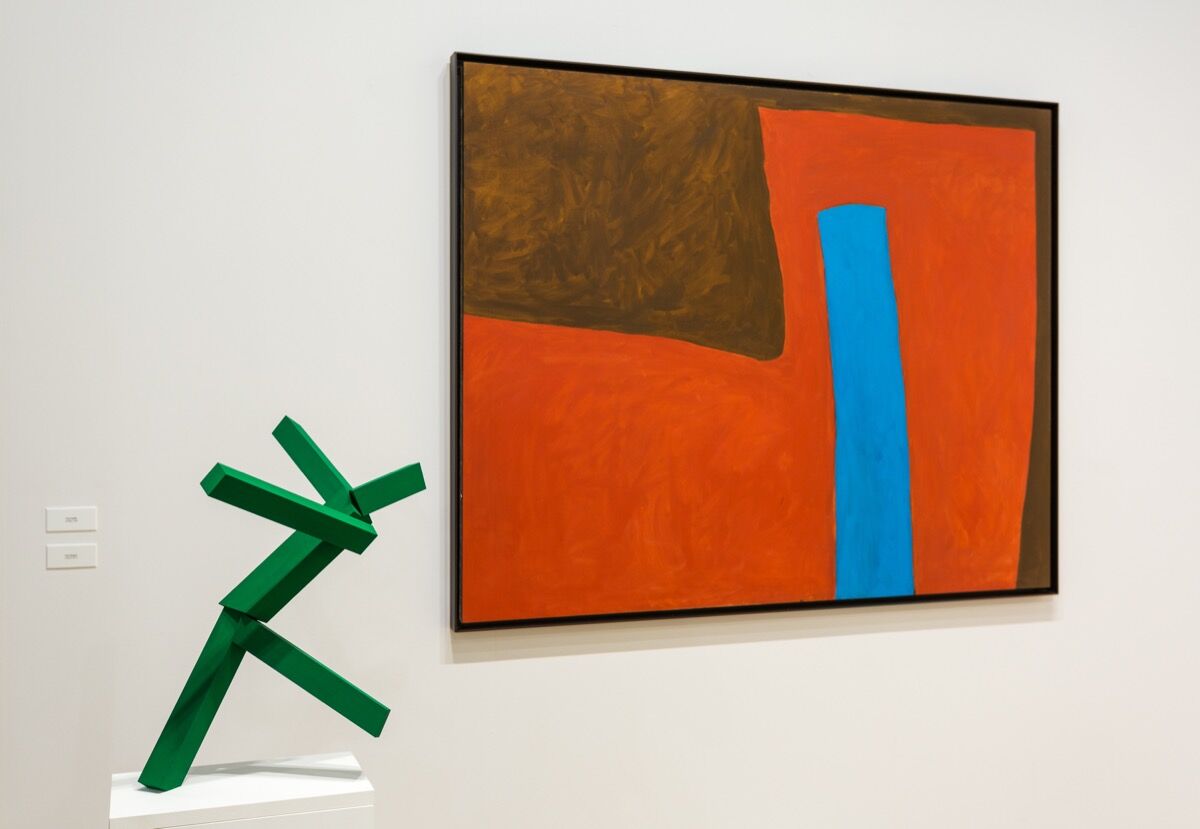
Installation view of Pace Gallery’s booth at Art Basel in Miami Beach, 2017. Photo by Alain Almiñana for Artsy.
“You have to be careful not to shoot yourself in the foot by pre-selling, pre-offering too many works because then you don’t have a reason to come to Miami,” he said. “It sort of cuts the branch off the tree that you’re sitting on. If you don’t create enough magic and enough sense of discovery, where is the necessity to come?”
Multiple advisers I spoke to throughout the week were delighted their clients were transacting via text message rather than in person (you can sell more art when you’re not limited to walking one buyer around the aisles at a time). One said that, after skipping the fair last year due to concerns about the Zika virus, his clients no longer saw the need come to Miami.
Whether art fairs need to be big, socially-driven events that draw collectors for the extracurricular activities or streamlined into industry events more closely resembling a trade show is open to debate. Art Basel has certainly built a brand (and a new business in Art Basel Cities) on its ability to attract vast audiences to a city for art programming, an effect that’s perhaps most visible on the fair’s bustling public days. But many dealers have been eager to diversify their activities outside of fairs, both commercially and academically.
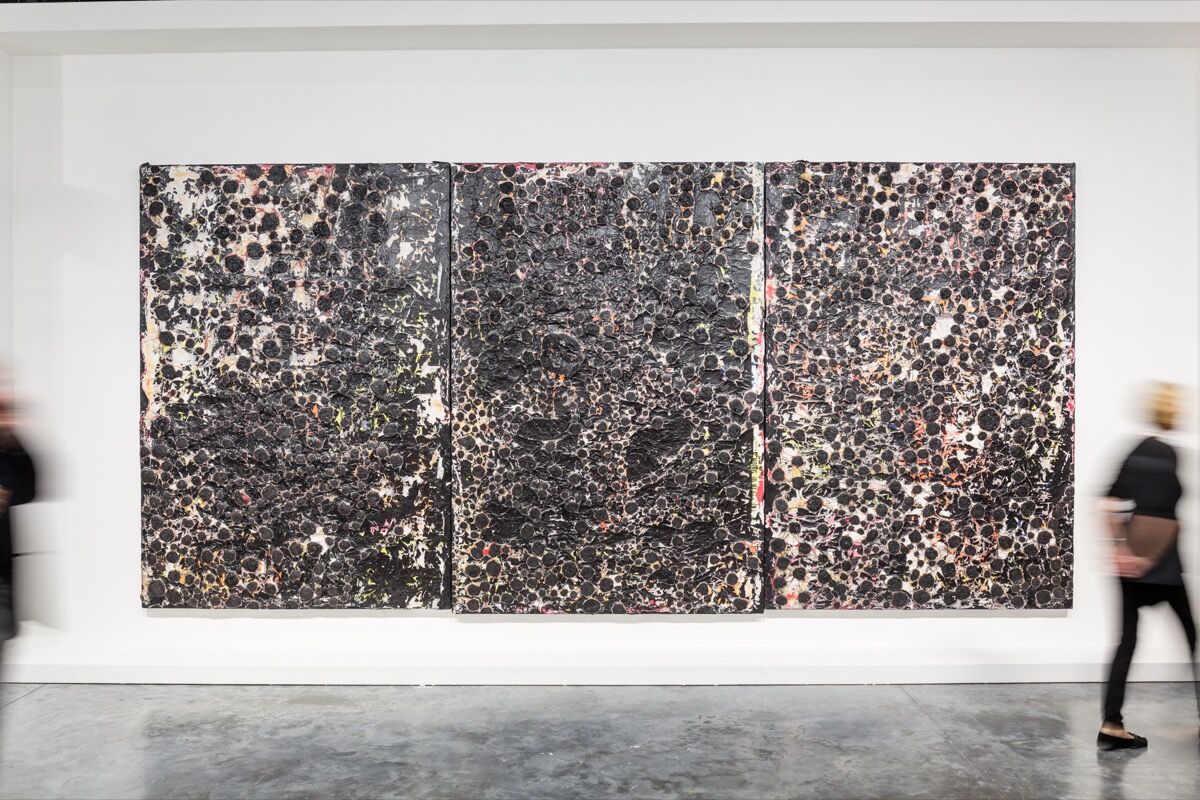
Installation view of Hauser & Wirth’s booth at Art Basel in Miami Beach, 2017. Photo by Alain Almiñana for Artsy.
Mega-galleries such as Hauser & Wirth have benefitted disproportionately from the growing concentration of wealth in the hands of a small sector of the global elite, giving them the resources to take on many of the functions that were previously the domain of curators, academics, and museums. Director Fiona Römer estimated the gallery has around 200 employees, which she joked can sometimes feel “completely understaffed” relative to the number of ambitious projects they take on at any one time and the number of foundations and estates they now represent (around 25 as of the end of 2017, the latest of which being Eduardo Chillida).
This June the gallery added the estate of Piero Manzoni and a large pair of the late artist’s works were on view in the booth—one of which is on loan, but not for sale, from a private collection. The gallery published a 43-page book for the occasion and the for-sale example, Achrome (ca. 1959), had found a new home by Thursday afternoon. Römer said the price was “super top secret.” She said they had rehung the booth both Wednesday and Thursday night, after sales including Bruce Nauman’s 1989 mobile Untitled (Two Wolves, Two Deer) (1989), which went to a private collection in Asia for $9.5 million, a Roni Horn work on paper (Yet 3, 2013/2017) for $750,000, and Jack Whitten’s Barney’s Legacy II (1980) for $950,000.
Römer said that while the gallery has recently invested heavily in Asia, and will open a Hong Kong location next spring, it hasn’t taken focus away from the U.S. “The American market is still very strong,” she said.
Sales in the six-figure range numbered into the hundreds across the convention center floor. By comparison, most fairs on the art world calendar may notch only a handful of transactions in this range or none at all. And much more activity, still, was taking place in the five-figure range.
On the one hand, this shows the power of fairs to generate revenue (galleries reported around 41% of their sales come from art fairs, according to The Art Market | 2017, a report underwritten by Art Basel and UBS). However, this level of activity is also a necessity at Art Basel where the stakes are incredibly high: costs are such that galleries that mostly show mid-career artists can have what on paper looks like a very successful week here and still walk away in the red or barely in the black.
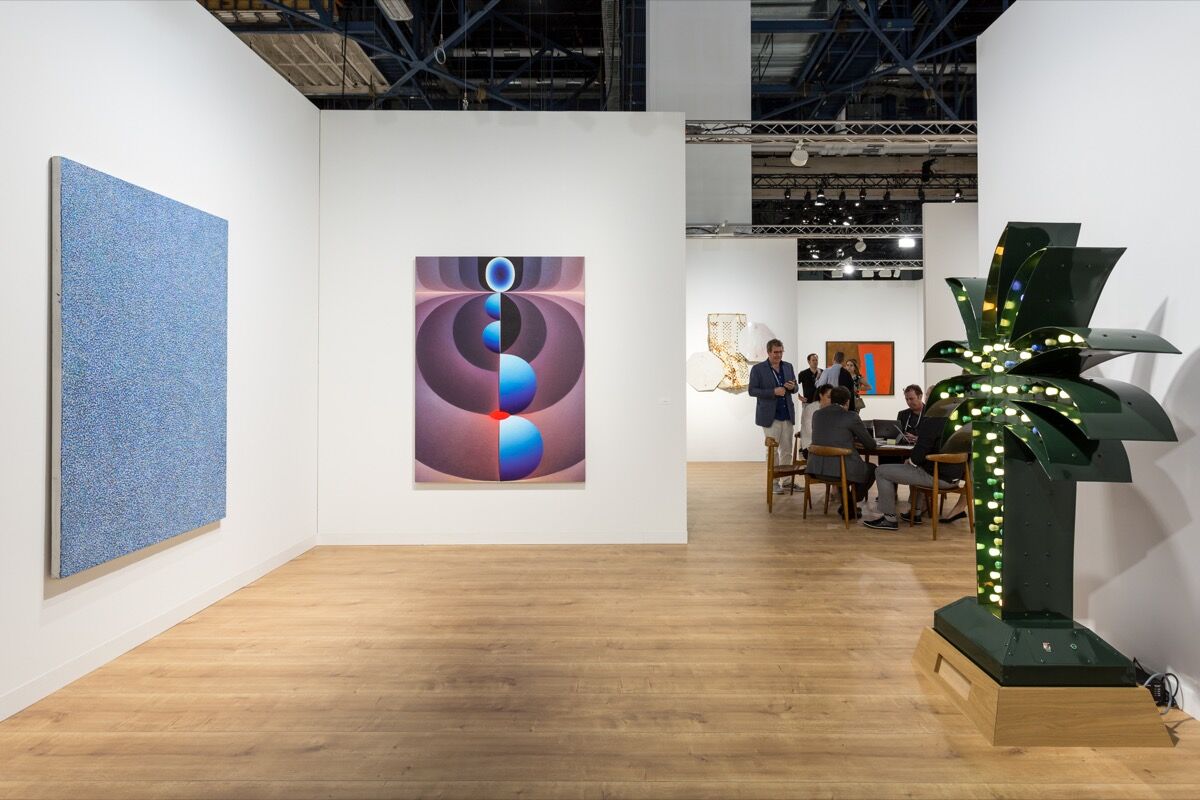
Installation view of Pace Gallery’s booth at Art Basel in Miami Beach, 2017. Photo by Alain Almiñana for Artsy.
Tina Kim said that her New York gallery and its sister gallery Kukje in South Korea had been able to avoid the pitfalls that have befallen many who sell works in a similar price range due to their niche position as experts in Korean art internationally and their strong roster of international artists for the market in Asia. She also cited the number of Korean curators currently in place at major institutions (including Clara Kim at the Tate Modern and Doryun Chong at Hong Kong’s M+ museum) as a boost to their program.
“We can ride above the wave,” of volatility in the market, Kim said.
She sold two works by Korean minimalist Ha Chong-Hyun (Conjunction 17-04 and Conjunction 17-05, both 2017) for $100,000-110,000, Kyungah Ham’s What you see is the unseen / Chandeliers for Five Cities DSC02-D-03-R(2016) for $70,000-80,000, Haegue Yang’s Semi-dépliable-Andante (2011) for $65,000, and Minouk Lim’s Headset (2015) and Portable Keeper Unha-ri(2011) for $30,000-35,000 apiece, among others.
Many more dealers (including very successful ones) questioned just how sustainable the current art fair calendar is and expressed a desire to reexamine how much time, money, and energy they’re putting into fairs in the coming year.
“Fairs are eating up a lot of our time and it’s been more work this year,” said Berlin gallerist Esther Schipper. She said that fatigue felt by dealers is not only due to the constant pace of preparing for and traveling to art fairs but also due to the fact that they are platforms that don’t deliver results evenly across a gallery’s stable.
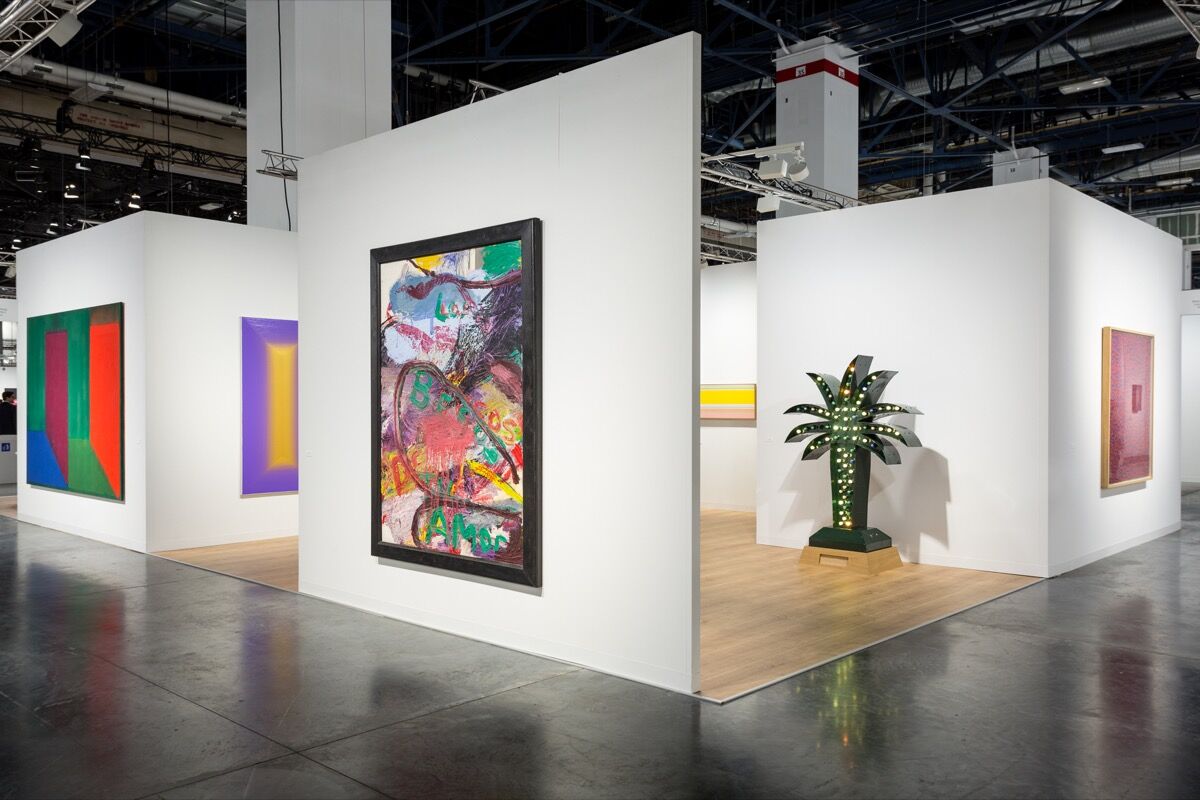
Installation view of Pace Gallery’s booth at Art Basel in Miami Beach, 2017. Photo by Alain Almiñana for Artsy.
“For certain artists it works incredibly well,” she said, citing sales of pieces by Tomás Saraceno, Matti Braun, and General Idea during Art Basel in Miami Beach’s first three days. “But there is also a lot you cannot show.”
The rise in the cost of fairs—not only of the booths themselves but also the cost of hotels, meals, flights, and shipping—can contribute to a greater emphasis on the more market friendly artists of a gallery’s program at these major events. Galleries can’t artificially increase the cost of their artists’ works to keep up, but the lucky ones are able to increase sales volume.
“You don’t come here to break even,” Schipper said.
Robbie Fitzpatrick of young Los Angeles gallery Freedman Fitzpatrickechoed the sentiments of fatigue on both the collector and gallery side. “It felt like there were people missing, but it might just be part of a larger sentiment of art fair fatigue,” he said, noting that he and his partner were looking to slim down the number of fairs they currently participate in to just three or four next year.
He said that they were excited to invest more heavily in pop-up exhibitions like ones they recently organized in Berlin (at Galerie Neu) and in Tokyo, citing concepts like CONDO, in which young galleries in two cities trade spaces for an exhibition each year, as interesting alternatives to traditional art fairs if maybe not “the grand solution.”
Nonetheless, Fitzpatrick was happy with the gallery’s results at Art Basel in Miami Beach, where, by the end of the day on Friday, they had sold all of the works they had on offer by Jill Mulleady for between $6,500 and $12,000.
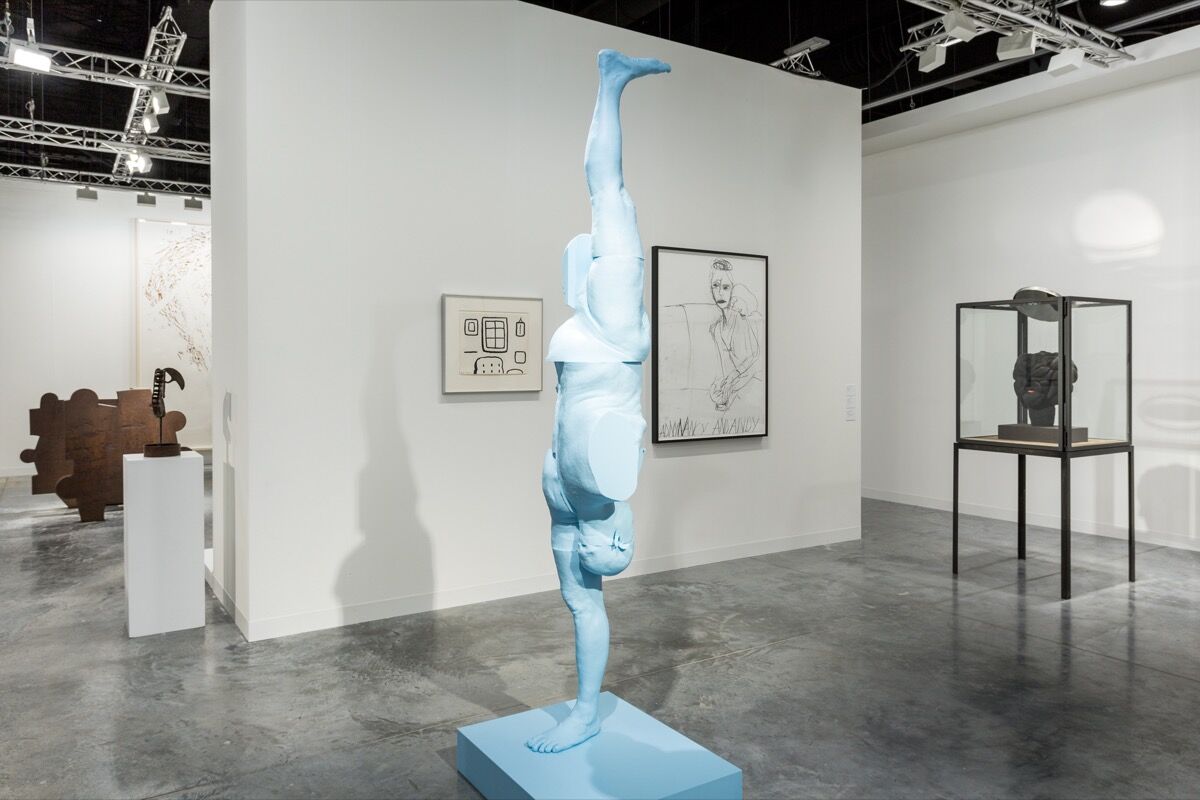
Installation view of Hauser & Wirth’s booth at Art Basel in Miami Beach, 2017. Photo by Alain Almiñana for Artsy.
Two-year-old Chicago gallery Patron also reported selling out their booth. The gallery brought eight works by Harold Mendez to the fair, which went on the range from $5,000 to $20,000. Mendez took part in this year’s Whitney Biennial and was selected for MoMA’s influential New Photography show next year.
Patron’s co-founder Emanuel Aguilar said that, while they do experience the same pressure from the rising cost of fairs as other young galleries, they are relatively protected from the other major factor that closing galleries have cited recently: rising rents.
“Being in Chicago is part of our business model,” he said, noting that in the time since they opened, several other new spaces have come up in the Windy City. “What we would spend on rent in New York goes towards us being able to travel to visit collectors and curators and spend time with our artists in their studios.” He suggested that an industry-wide reckoning regarding expenditures and business strategy has only just begun.
This reckoning has mainly been the domain of small and mid-size galleries thus far. But despite a bullish economic outlook for 2018, some blue chip American dealers suggested that the growth they’ve seen in 2017 may not carry on into the new year.
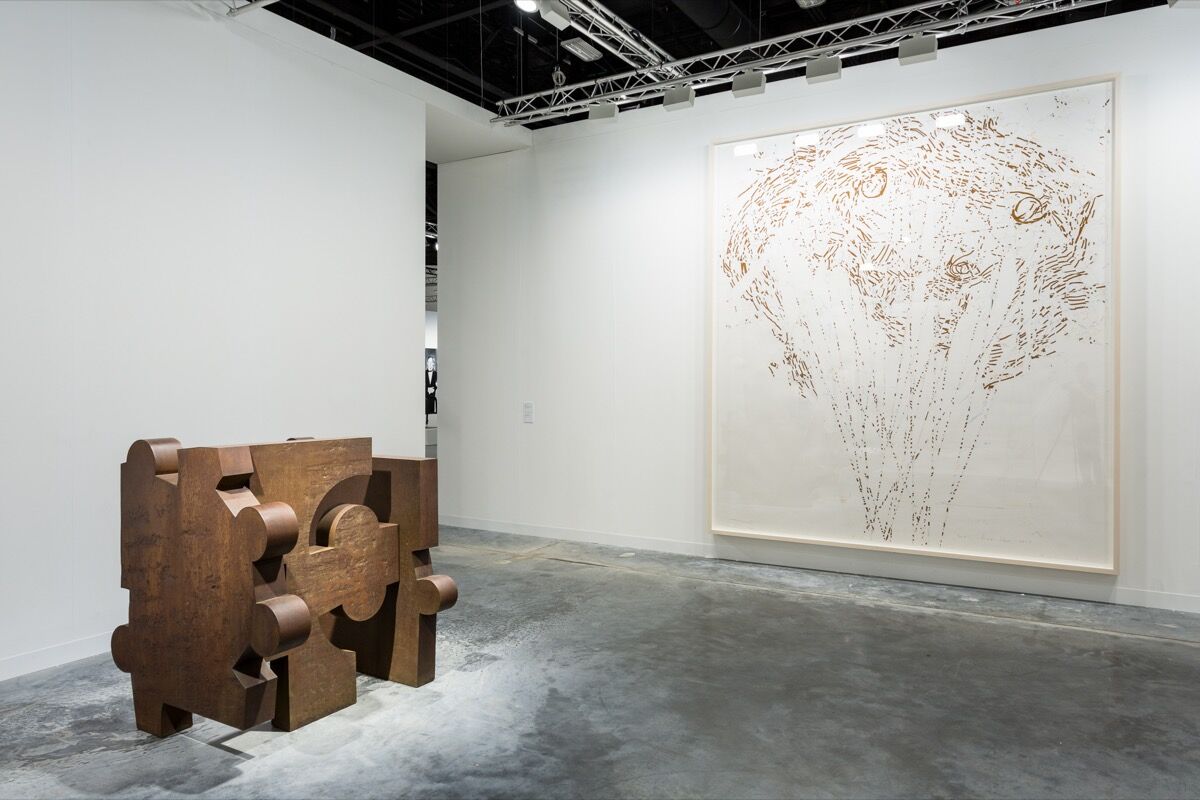
Installation view of Hauser & Wirth’s booth at Art Basel in Miami Beach, 2017. Photo by Alain Almiñana for Artsy.
Pace’s Glimcher said he expects the supply currently fueling the top end of the market to wane in the new year. “We’re facing a disadvantageous tax situation coming up,” he said, referring to the elimination of Section 1031 of the tax code as of January 1, if the current bill becomes law. (The provision allows U.S. collectors to forego capital gains taxes on artwork sales if profits are invested in a similar asset for investment purposes.) Heirs will also have less reason to sell, if the estate tax is done away with as proposed, removing the first of the three D’s—death, divorce, and debt—that also drive supply in the market.
The bill’s elimination of deductions for state and local taxes could also hit demand, Glimcher said, since American collectors tend to live in high-tax states like New York and California on the east and west coasts.
“It’s going to affect the very high end of the market for Americans and Americans make up a very big chunk of the very high end of the market,” he said. “Some major collectors are going to sell a little less, which is going to push up the prices and also mean that fewer people will be able to participate.”
While in the sunshine state this week, though, the feeling was: make hay.
Alexander Forbes is Artsy’s Executive Editor.
Correction:
An earlier version of this article misstated the number of employees at Hauser & Wirth. It is around 200 not over 300.


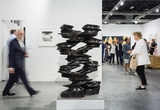
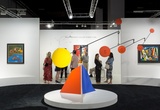
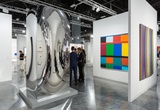



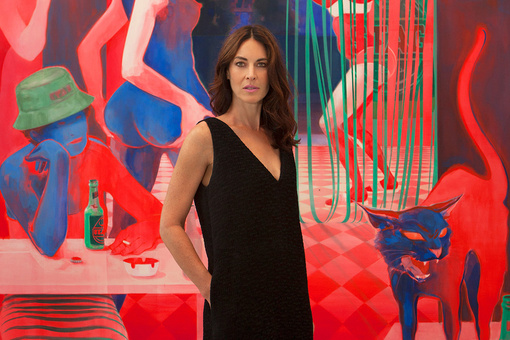
No comments:
Post a Comment